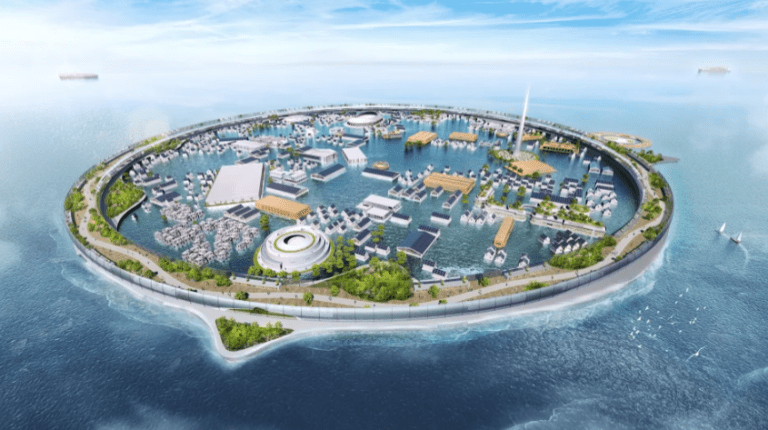
Tech experts have revealed plans for a floating city likened to a real-life Noah’s ark. According to Japanese designers, the ocean-based metropolis would provide a “self-sufficient habitat” for 40,000 people.
The developers, N-Ark, even say the zone, named Dogen City, would be resilient to an apocalypse. The floating city measures 4km in circumference, and the plan would be for inhabitants to be able to get to any point in the zone within an hour. Numerous buildings, including a sports stadium, are proposed, and properties could be moved by sailing them to another location.
The infrastructure is circular in design to protect it from severe weather and has three infrastructure types. A habitable ring contains the central habitable zone, an undersea data center and medical research facilities, and flexible inner ring structures that can move freely in the internal bay. N-Ark’s development roadmap states the project will be finished in 2030. Designers see the city as a sea-based version of Elon Musk’s SpaceX.
Designers explained, “New Ocean is a term intended for the ocean version of the private space business innovation ‘New Space’ started by Space X. We will propose six elements (medical, food, housing, information, and electrical services) to realize New Ocean, promote the entry of various companies, and promote ocean development activities.”
They added, “Through this, we aim to create maritime innovation and seek to create this future together with participating companies, governments, and universities.” This development comes after it was revealed that Africa is quickly becoming home to the world’s first megalopolis, with a horizon full of skyscrapers and a motorway set to span the length of five countries.
The zone stretches almost 1,000km along Africa’s west coast, starting in Abidjan and ending in Lago. It’s set to house half a billion people within decades. Africa is in the middle of a demographic revolution as its population grows. More offices, shopping complexes, hotels, and high-rise towers are popping up on the five countries’ coastlines, making the boundaries blurred.
The world is now watching as the first-ever megalopolis evolves. As its infrastructure increases, so will its population. African Development Bank chiefs have already raised and earmarked a whopping £12.6 billion to create a new motorway along the Gulf of Guinea from Abidjan to Lagos. Lydie Ehouman, a transportation economist at the bank, told “The Guardian,” “It will be up to six lanes wide and be toll-gate free as drivers will have chips placed on their license plates.”
The evolving megalopolis will transform minor cities into major ones as intrigued citizens migrate to the coastal region. According to experts, it could be at the forefront of an economic boom for the continent.
